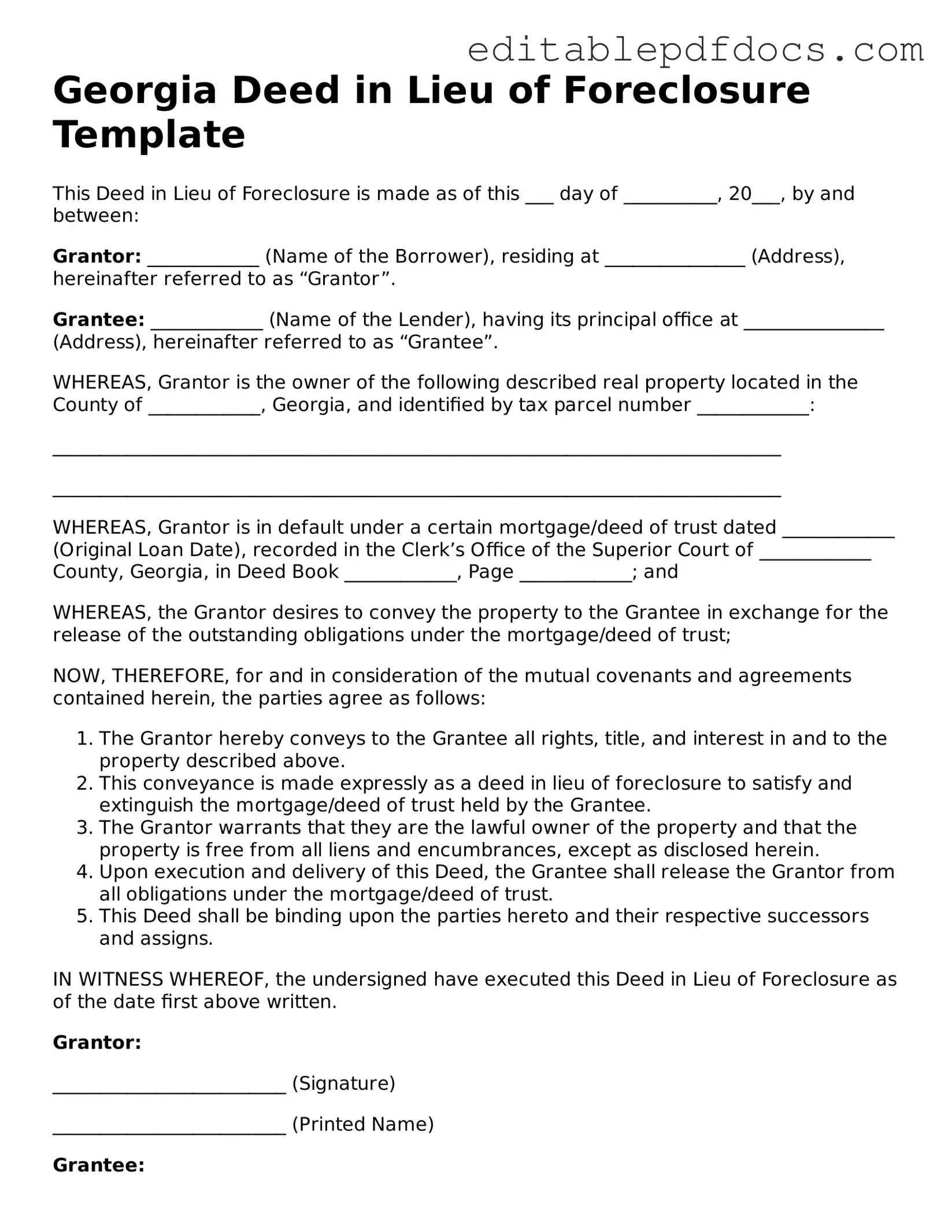Deed in Lieu of Foreclosure Document for Georgia
A Georgia Deed in Lieu of Foreclosure is a legal document that allows a homeowner to transfer their property title to the lender in order to avoid foreclosure. This process can provide a more amicable solution for both parties, often resulting in less damage to the homeowner's credit and a quicker resolution to the financial difficulties faced. For those considering this option, filling out the form is a crucial first step; click the button below to get started.
Open Editor Now
